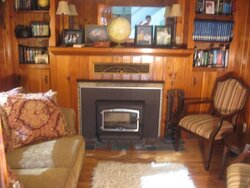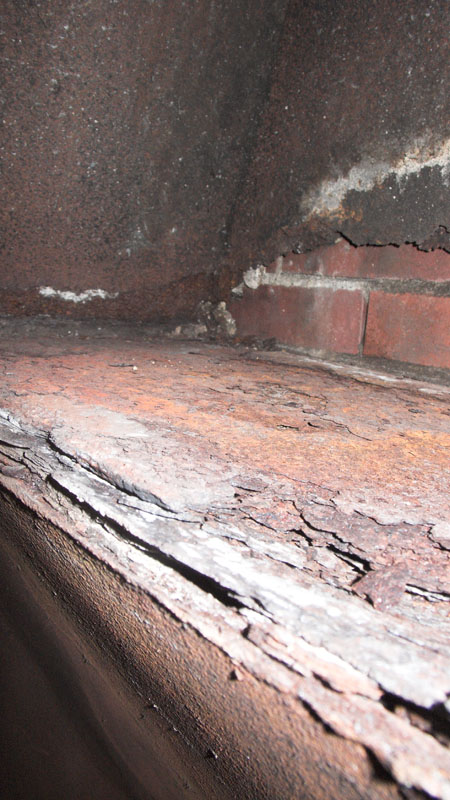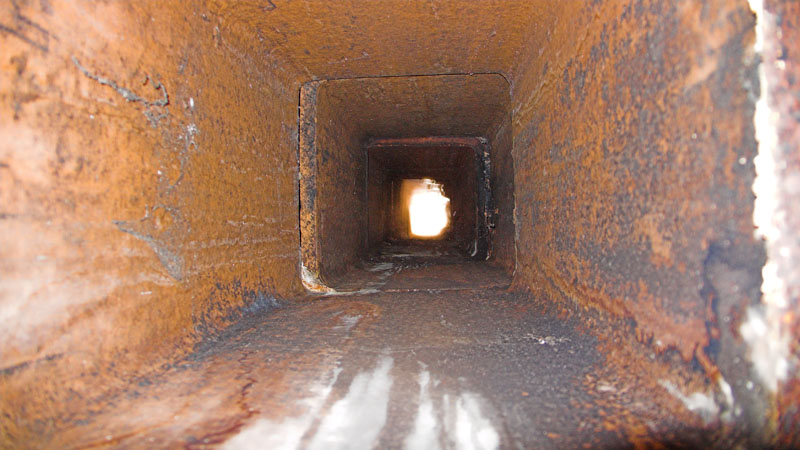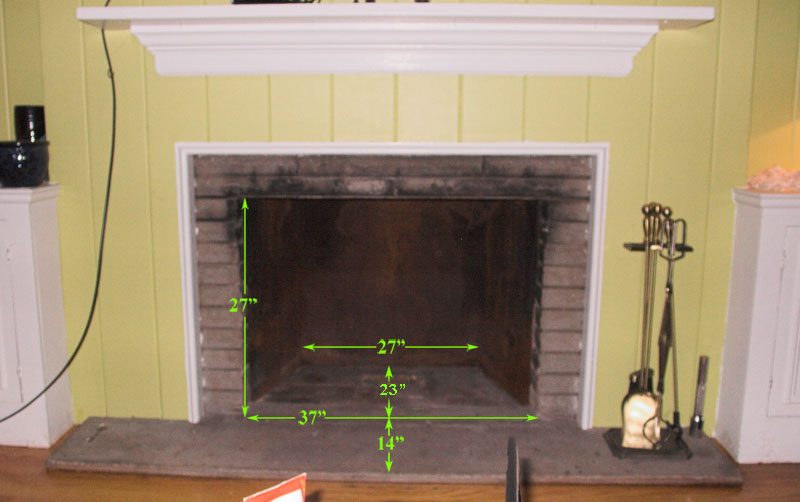I've never lived in a house with a woodburning stove or fireplace, but this spring my wife and I bought a house with a decommissioned fireplace that I'm thinking of rehabilitating. Over the last few weeks I've read some of the articles here and looked at my house carefully enough to have a good idea what I'm dealing with. What I don't know is how much it should cost, and the ballpark figures I've gotten from the pro's I've talked to are so wildly different that I don't know what to think.
What's there now is a late 1950's heatform. The lower part visible from the room doesn't look awful, but the damper and the smoke chamber immediately above are toast -- severe rust, holes big enough to put your hand through, etc. So this fireplace will never see flame again, and since I now know how inefficient it would've been, that's not a great loss. It's an exterior brick chimney , about 21' from the top of the firebox to the top of the masonry, lined with big 13" x 13" tile, no offsets. Tiles are clean and intact but some have shifted slightly so that their edges are misaligned; exterior brick is in good shape.
What I'm interested in is a smaller insert. I'm fairly sure this would only be for occasional use, not as a constant heat source. I like the look of the VC Montpelier and the Regency Alterra. Either would require some prep work because the existing hearth extension is too small, and there's wood paneling that comes too close to the fireplace opening and would have to be cut back. But I'm a skilled woodworker and have a bit of tiling experience too, so I would do all of that preparation myself.
There's easy ladder access to the roof, and the roof is walkable. The front door of the house is almost level with the street and 20 feet from where a truck would theoretically drop off a stove; it could hardly be easier to get stuff inside.
I contacted 2 local companies, both of which seemed to be positively reviewed at one generic online review site or another. The first guy did not come out to the house, but I described the situation in some detail and he guesstimated that the VC Montpelier, installed, with chimney liner, would probably run around $4K. The second guy, whose home base was closer and who did stop by in person, guesstimated that the Regency Alterra (the CI1250, which comes standard with a fan like the VC model), installed with an insulated, heavy-gauge flexible liner, would probably run $6-7K.
Now, neither was a firm quote and this isn't an apples-to-apples comparison since they're different units and the first/cheaper guy didn't specify the weight of the liner or whether he was including insulation, but the difference seems pretty dramatic to me. Does one of these prices seem like an obvious outlier when compared to your experience? For context, this is all happening in a middle-class, inner-ring suburb of Pittsburgh. Any insight you can offer would be appreciated.
Edit: it might be relevant that the first/cheaper guy owns a showroom and is a dealer for both Regency and Vermont Castings, while the more expensive guy usually installs Napoleon products *but is not a dealer for any brand.*
What's there now is a late 1950's heatform. The lower part visible from the room doesn't look awful, but the damper and the smoke chamber immediately above are toast -- severe rust, holes big enough to put your hand through, etc. So this fireplace will never see flame again, and since I now know how inefficient it would've been, that's not a great loss. It's an exterior brick chimney , about 21' from the top of the firebox to the top of the masonry, lined with big 13" x 13" tile, no offsets. Tiles are clean and intact but some have shifted slightly so that their edges are misaligned; exterior brick is in good shape.
What I'm interested in is a smaller insert. I'm fairly sure this would only be for occasional use, not as a constant heat source. I like the look of the VC Montpelier and the Regency Alterra. Either would require some prep work because the existing hearth extension is too small, and there's wood paneling that comes too close to the fireplace opening and would have to be cut back. But I'm a skilled woodworker and have a bit of tiling experience too, so I would do all of that preparation myself.
There's easy ladder access to the roof, and the roof is walkable. The front door of the house is almost level with the street and 20 feet from where a truck would theoretically drop off a stove; it could hardly be easier to get stuff inside.
I contacted 2 local companies, both of which seemed to be positively reviewed at one generic online review site or another. The first guy did not come out to the house, but I described the situation in some detail and he guesstimated that the VC Montpelier, installed, with chimney liner, would probably run around $4K. The second guy, whose home base was closer and who did stop by in person, guesstimated that the Regency Alterra (the CI1250, which comes standard with a fan like the VC model), installed with an insulated, heavy-gauge flexible liner, would probably run $6-7K.
Now, neither was a firm quote and this isn't an apples-to-apples comparison since they're different units and the first/cheaper guy didn't specify the weight of the liner or whether he was including insulation, but the difference seems pretty dramatic to me. Does one of these prices seem like an obvious outlier when compared to your experience? For context, this is all happening in a middle-class, inner-ring suburb of Pittsburgh. Any insight you can offer would be appreciated.
Edit: it might be relevant that the first/cheaper guy owns a showroom and is a dealer for both Regency and Vermont Castings, while the more expensive guy usually installs Napoleon products *but is not a dealer for any brand.*






